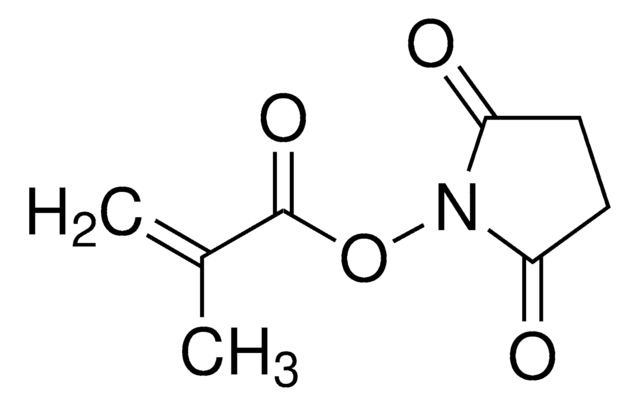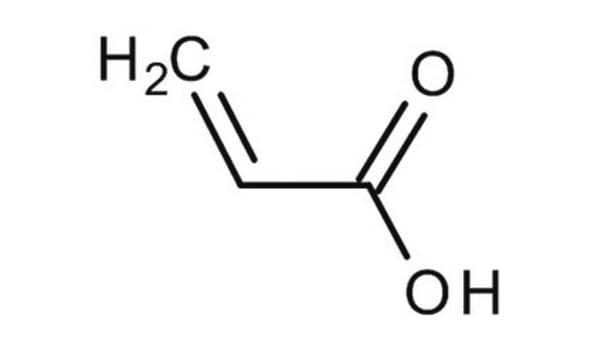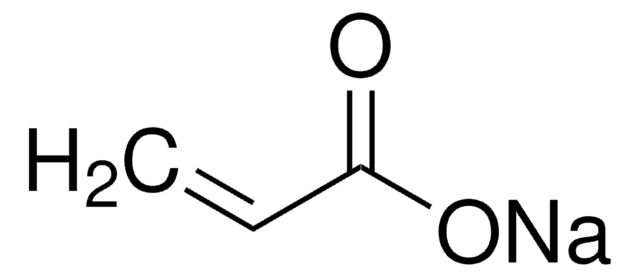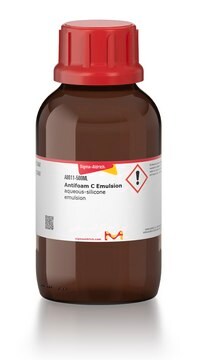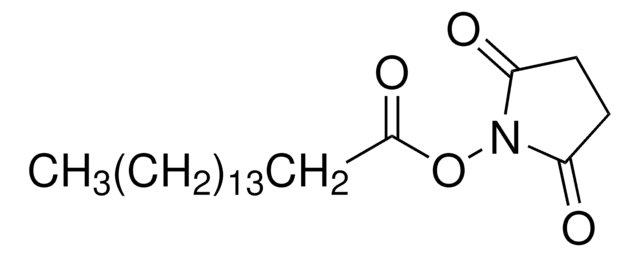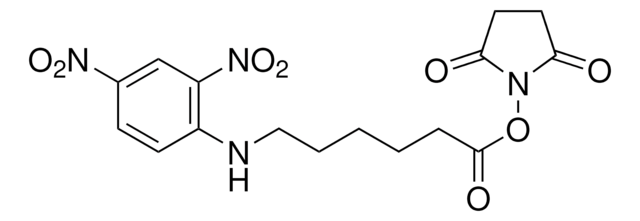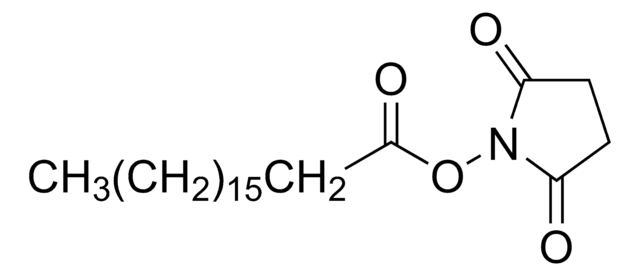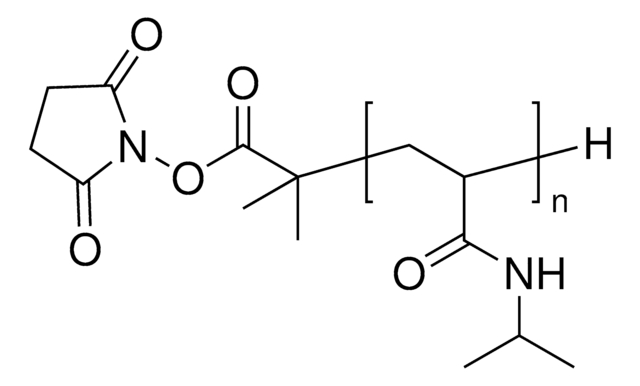A8060
Acrylic acid N-hydroxysuccinimide ester
≥90%, for peptide synthesis
Synonym(s):
N-Acryloxysuccinimide
About This Item
Recommended Products
product name
Acrylic acid N-hydroxysuccinimide ester, ≥90%
Quality Level
Assay
≥90%
form
powder
application(s)
peptide synthesis
storage temp.
2-8°C
SMILES string
C=CC(=O)ON1C(=O)CCC1=O
InChI
1S/C7H7NO4/c1-2-7(11)12-8-5(9)3-4-6(8)10/h2H,1,3-4H2
InChI key
YXMISKNUHHOXFT-UHFFFAOYSA-N
Looking for similar products? Visit Product Comparison Guide
Application
- Acrylated hyaluronic acid (HA) hydrogel for bone regeneration applications.
- Injectable, biodegradable, and thermosensitive copolymers for tissue engineering.
- Imidazole-based biocompatible, aqueous quantum dots (QDs).
Signal Word
Warning
Hazard Statements
Precautionary Statements
Hazard Classifications
Acute Tox. 4 Oral - Eye Irrit. 2
Storage Class Code
11 - Combustible Solids
WGK
WGK 1
Flash Point(F)
Not applicable
Flash Point(C)
Not applicable
Regulatory Listings
Regulatory Listings are mainly provided for chemical products. Only limited information can be provided here for non-chemical products. No entry means none of the components are listed. It is the user’s obligation to ensure the safe and legal use of the product.
JAN Code
A8060-VAR:
A8060-BULK:
A8060-1G:
A8060-1G-PW:
A8060-1G-LBL:
Choose from one of the most recent versions:
Already Own This Product?
Find documentation for the products that you have recently purchased in the Document Library.
Customers Also Viewed
Our team of scientists has experience in all areas of research including Life Science, Material Science, Chemical Synthesis, Chromatography, Analytical and many others.
Contact Technical Service

